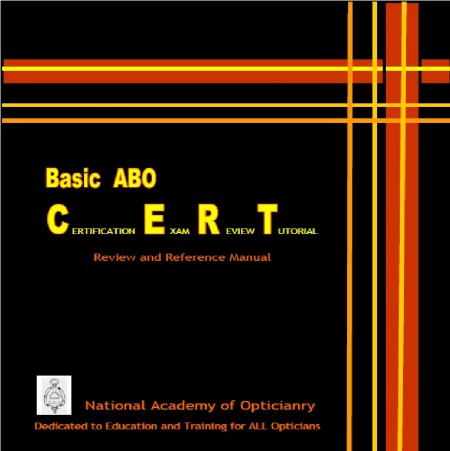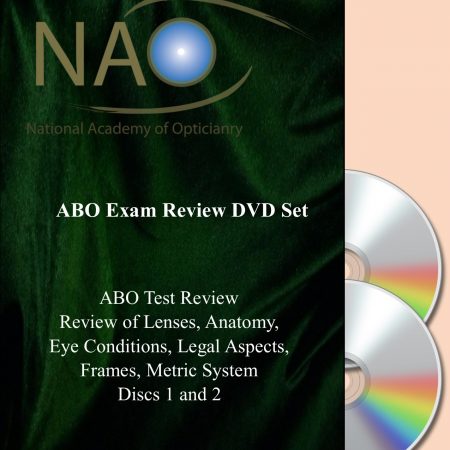Description
ABO Intermediate Teaching Tool: Certification Exam Review Tutorial (C.E.R.T.)
(Following is a random selection of text from the Certification Exam Review Tutorial)
PROGRESSIVE MEASUREMENT
Measurement procedures for progressive lenses differ from the measurement procedures for traditional style multifocals only in that they require a greater degree of precision. Since traditional multifocals do not deliver continuous vision the dispenser needs only to situate the central point of the segment line down and slightly in. Because the bifocal segment has the same focus all over, it can absorb a greater degree of mis-measurement. On the other hand, progressives do offer continuous vision so they rely upon exact alignment for optimum performance.
Good technical lifting for progressive lenses begins with an accurate monocular pupillary measurement. Split binocular pupillary measurements, common with traditional multifocals, are unacceptable with progressives since they will very often lead to inaccurate positioning of the progressive corridor. The problem with binocular measurements is that they assume a presence of facial symmetry, which in many cases does not exist. If pupils are not spaced equidistant from the center of the bridge, and the corridors are spaced according to false binocular split reading problems will result. The wearer will encounter interference as the eyes move down through the corridors (Fig. 7).
To assure the greatest degree of ease and accuracy, monocular measurements should be taken with a device such as Essilor’s Corneal Reflex Pupilometer. This instrument enables the dispenser, with a single procedure, to measure both the binocular and monocular pupillary distances. Attaining both measurements is important to assure accuracy since one can be used to verify the other. The monocular distance when added together must equal the binocular distance. If for some reason there is a discrepancy between the two readings, new measurements should be taken.
Once we are certain of the horizontal papillary readings we can move to the second critical level of progressive lens measurement/vertical height. Since progressive lenses provide continuous vision the accurate vertical positioning of the lens is imperative. A lens positioned too high or too low will not provide the maximum vision as the eye sweeps from distance through intermediate to near. The best progressive lenses provide a smooth, uninterrupted flow of changing power from distance to near. For most lens designs to achieve smooth…







